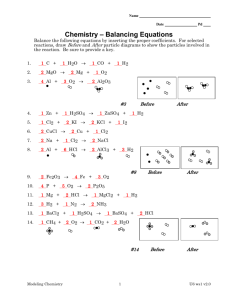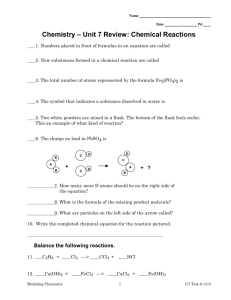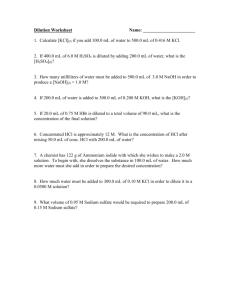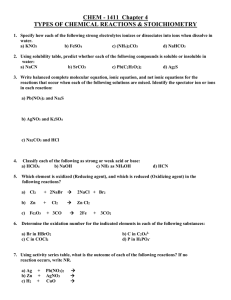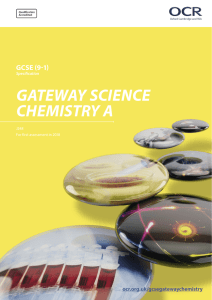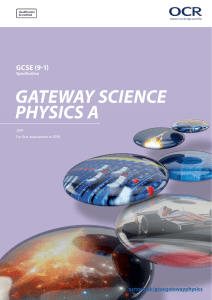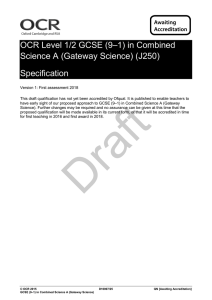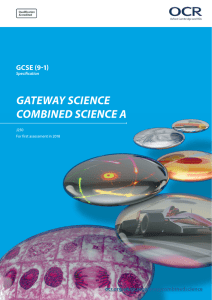General Chemistry - Unit 9 Worksheet 1
advertisement
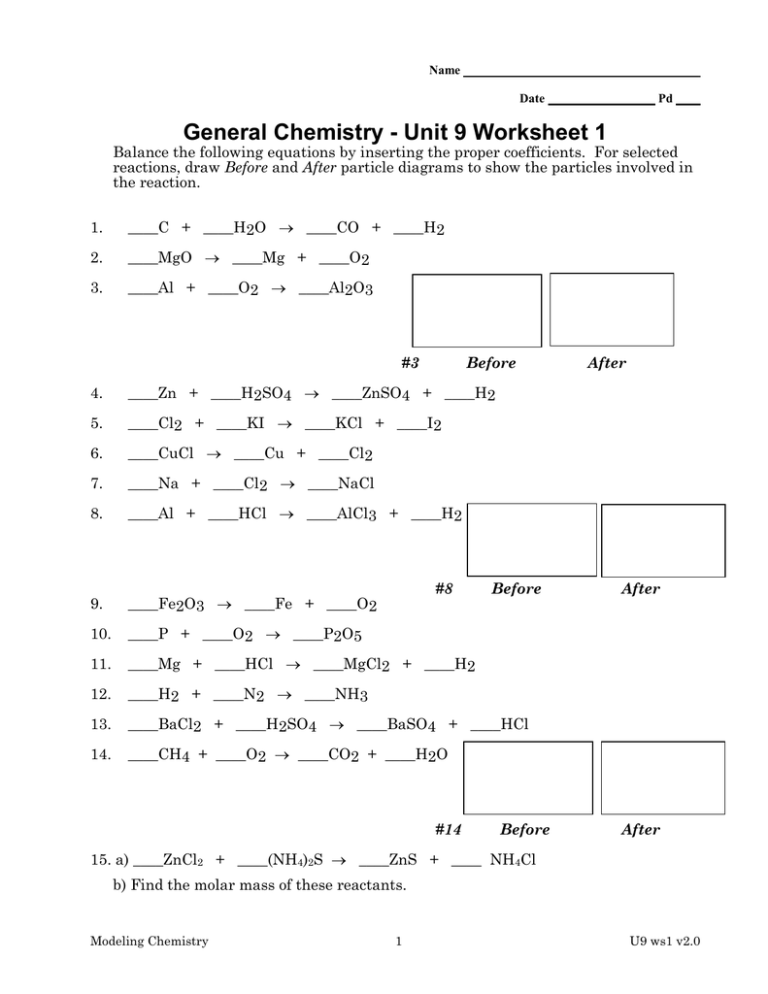
Name Date Pd General Chemistry - Unit 9 Worksheet 1 Balance the following equations by inserting the proper coefficients. For selected reactions, draw Before and After particle diagrams to show the particles involved in the reaction. 1. ____C + ____H2O ____CO + ____H2 2. ____MgO ____Mg + ____O2 3. ____Al + ____O2 ____Al2O3 #3 Before 4. ____Zn + ____H2SO4 ____ZnSO4 + ____H2 5. ____Cl2 + ____KI ____KCl + ____I2 6. ____CuCl ____Cu + ____Cl2 7. ____Na + ____Cl2 ____NaCl 8. ____Al + ____HCl ____AlCl3 + ____H2 9. ____Fe2O3 ____Fe + ____O2 10. ____P + ____O2 ____P2O5 11. ____Mg + ____HCl ____MgCl2 + ____H2 12. ____H2 + ____N2 ____NH3 13. ____BaCl2 + ____H2SO4 ____BaSO4 + ____HCl 14. ____CH4 + ____O2 ____CO2 + ____H2O #8 #14 Before Before After After After 15. a) ____ZnCl2 + ____(NH4)2S ____ZnS + ____ NH4Cl b) Find the molar mass of these reactants. Modeling Chemistry 1 U9 ws1 v2.0 c) How many moles of ZnCl2 would be in 25 g? of (NH4)2S have? How much mass would 0.55 moles Part II: Write the formulas of the reactants and products, then balance the equations. (See Clues and Hints below.) 1. Nitric oxide (NO) reacts with ozone (O3) to produce nitrogen dioxide and oxygen gas. 2. Iron burns in air to form a black solid, Fe3O4. 3. Sodium metal reacts with chlorine gas to form sodium chloride. 4. Acetylene, C2H2, burns in air to form carbon dioxide and water. 5. Hydrogen peroxide (H2O2) easily decomposes into water and oxygen gas. 6. Hydrazine (N2H4) and hydrogen peroxide are used together as rocket fuel. The products are nitrogen gas and water. 7. If potassium chlorate is strongly heated, it decomposes to yield oxygen gas and potassium chloride. 8. When sodium hydroxide is added to sulfuric acid (H2SO4), the products are water and sodium sulfate. 9. In the Haber process, hydrogen gas and nitrogen gas react to form ammonia, NH3. CLUES and HINTS: Products usually follow words like produces, yields, forms Watch for our diatomic elements (H2,N2, etc…), which are often (but not always) gases Include ‘state subscripts’ behind each substance [ (s), (l), (g) ] when the state is given Remember air is a mixture of (primarily) two gases, O2 and N2. Which is most likely to participate in a reaction? Modeling Chemistry 2 U9 ws1 v2.0 Elemental metals exist as single, unbonded atoms. (Ex: formula for copper metal is Cu) Watch for ionic vs molecular compounds. Use nomenclature rules, and your ion chart and periodic table to figure out the formulas for these. Modeling Chemistry 3 U9 ws1 v2.0
